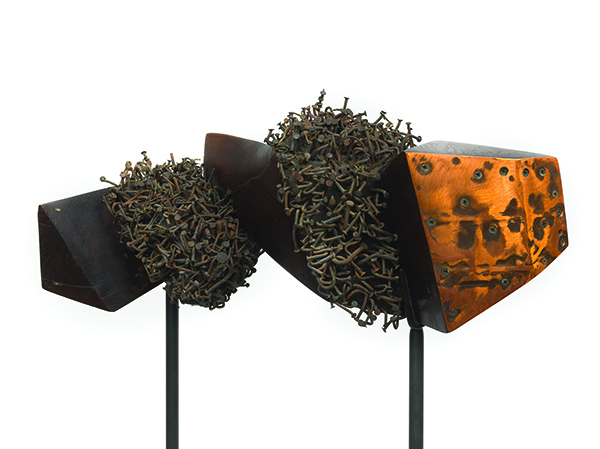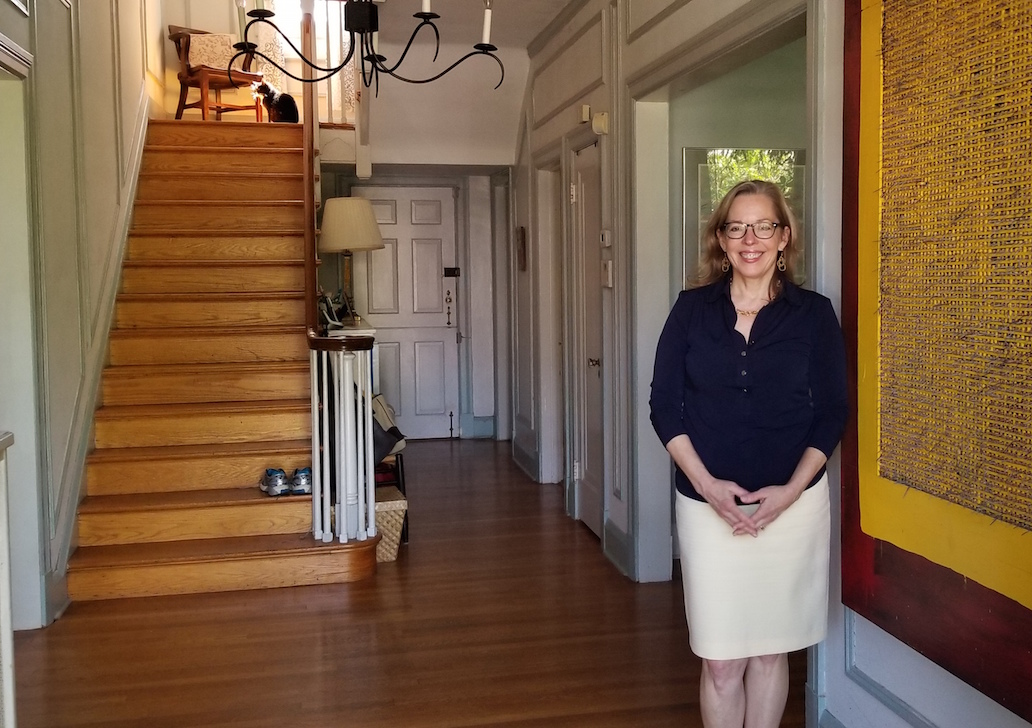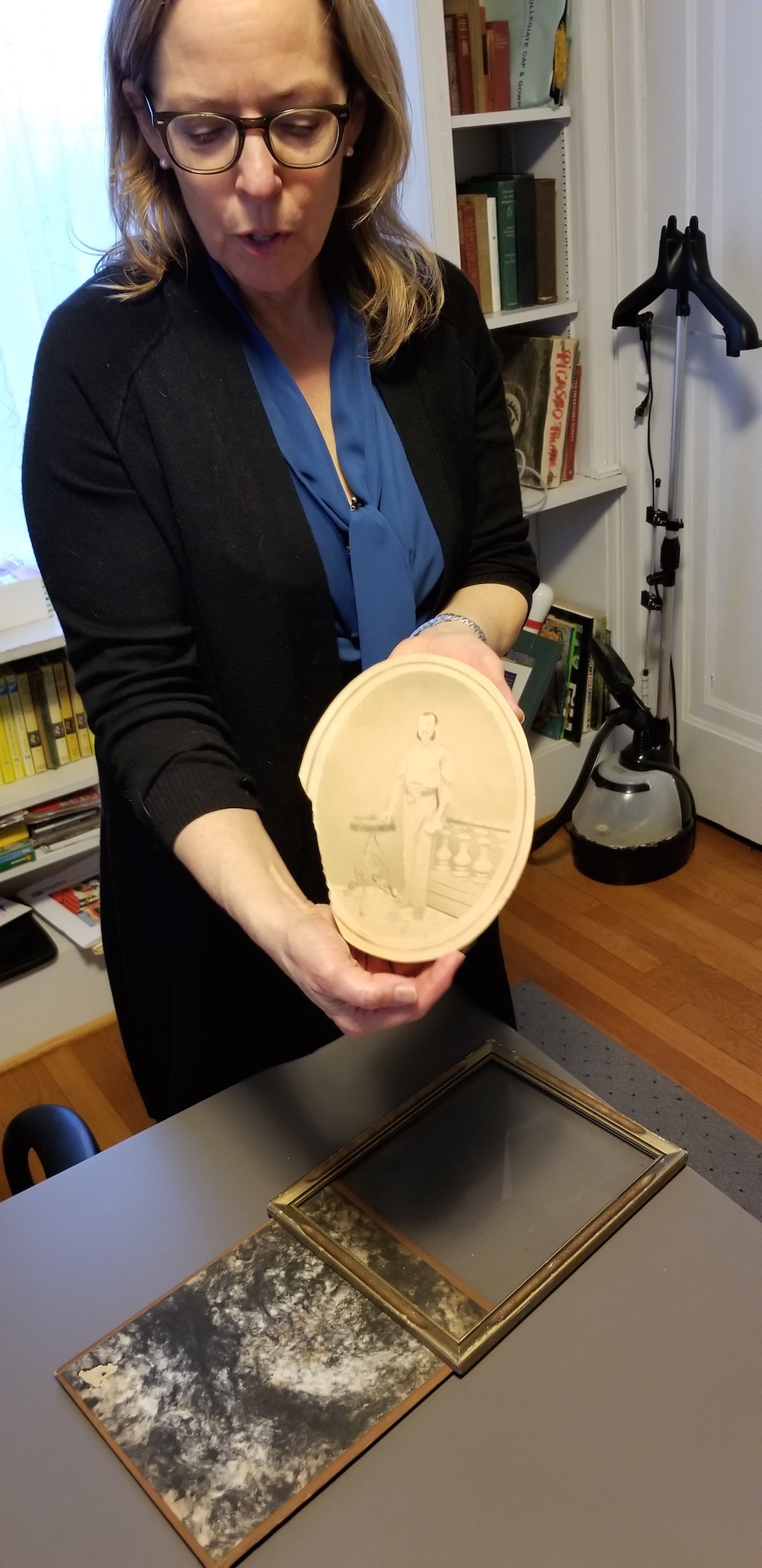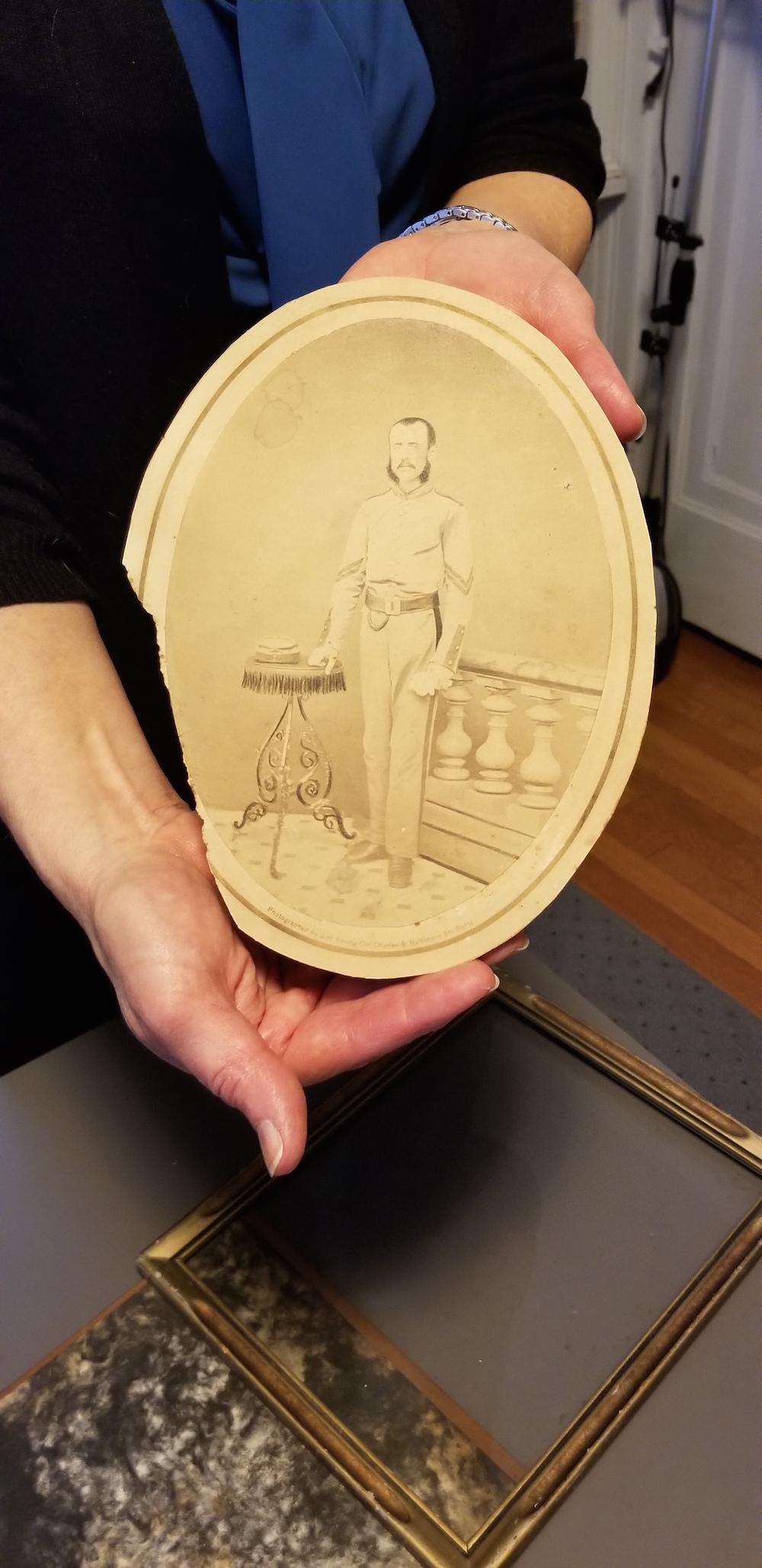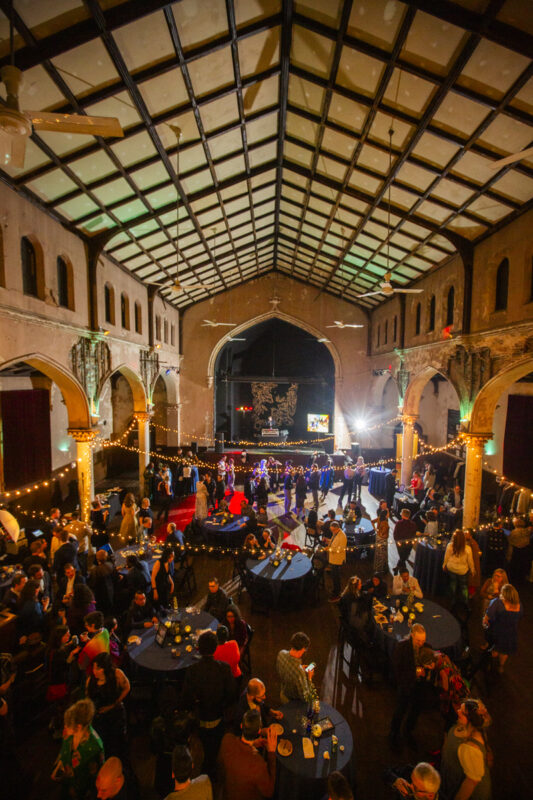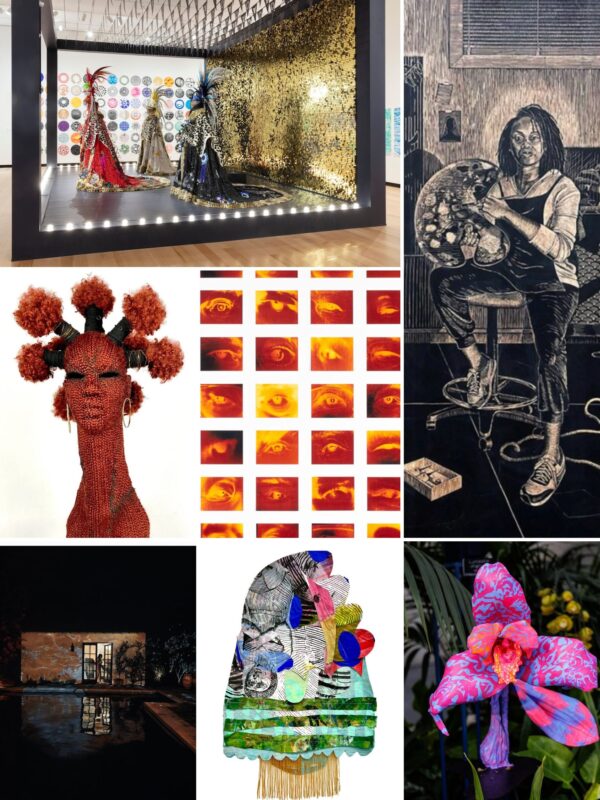At Home with Jeannie Howe, Executive Director of the Greater Baltimore Cultural Alliance by Cassandra Miller
If the artists and subjects of the pieces in Jeannie Howe’s home could step through their paintings, photographs, and sculptures, you would see the real and adopted family tree of Howe’s life.
Through her home décor, Howe has surrounded herself with loved ones—whether they be her talented sister, uncle, brother and son; college friends; Baltimore artists; ancestors with wandering eyes; fossils from the western shore of the Chesapeake Bay; or memories of a summer spent making garlic aioli from scratch for a puppet theater company. Her home reflects her community.
In her professional life, Howe is the executive director of one of the most important communities for Baltimore’s creatives, the Greater Baltimore Cultural Alliance. The GBCA is Baltimore’s service organization for the arts and culture community, providing information and services that benefit individual artists and arts organizations in Maryland like job listings, fundraising and professional development support like the Urban Arts Leadership Program, the CultureFly event calendar, and an email newsletter with more than 30,000 subscribers. Before taking the helm of the GBCA, Howe worked in leadership positions for causes and organizations that include statewide child advocacy, adult literacy, the United Way, Baltimore Tree Trust, the Arc of Southern Maryland, and Everyman Theatre (for which she led the capital campaign for its current beautifully designed theater in the Bromo Arts District).
Before taking the helm of the GBCA, Howe worked in leadership positions for causes and organizations that include statewide child advocacy, adult literacy, the United Way, Baltimore Tree Trust, the Arc of Southern Maryland, and Everyman Theatre (for which she led the capital campaign for its current beautifully designed theater in the Bromo Arts District).
Remnants of that work are scattered throughout Howe’s home. “I’ve done a million bazillion charity auction things,” she says. Some notable leftovers are a Baltimore Reads silkscreen designed by Kathryn Shagas and signed by Cal Ripken in the second-floor office. Plates from the front page of The Washington Post’s sports section when Jeff Gordon won the Winston Cup signed by Gordon for a NASCAR fundraiser are in the attic. “They were all organizations I had some sort of connection to and was excited about,” Howe says. But when the executive director position at GBCA opened, she says she thought, “Oh, that’s my job!” Since she got the job in January 2012, the GBCA has expanded its services and increased membership from 80 to nearly 500 artists and organizations. The Daily Record this spring recognized her as one of the region’s Top 100 Women for the second time in four years.
“They were all organizations I had some sort of connection to and was excited about,” Howe says. But when the executive director position at GBCA opened, she says she thought, “Oh, that’s my job!” Since she got the job in January 2012, the GBCA has expanded its services and increased membership from 80 to nearly 500 artists and organizations. The Daily Record this spring recognized her as one of the region’s Top 100 Women for the second time in four years.
When I visit her home for the first time in April, she offers me a glass of wine, and immediately I feel welcomed—no longer nervous to meet one of the most influential people in the Baltimore arts community. I decline the wine, but she pours herself a glass and sits on her living room couch. Max, a black-and-white cat, jumps on her lap. “He’s needy, because we’ve been away,” she says.


Howe shares her Callaway-Garrison home with her husband Alan Kreizenbeck, an associate professor of theater at University of Maryland, Baltimore County—the position that brought the couple to Baltimore from Houston in 1989. The couple has lived in the house for 28 years. It is where they raised their two grown children. This spring they hosted their daughter’s engagement party at the house. A downstairs hallway is a sort of homage to their son, a recent St. Mary’s College of Maryland graduate and an artist—on one wall is a green painting with a Keith Haring-esque Adam and Eve he made in high school; another wall has a print of a chicken he presented to Howe. She wouldn’t let him give her a real chicken. “He said he always wanted to give me a chicken, but I said ‘no,’ so this is what he gave me,” Howe says with a smile.
Other family members fill the house. One of her uncles, a brother, and her sister were professional artists; two of her uncle’s landscapes—one dark and moody that Howe calls “Hopper-esque,” one of colorful flowers—are hanging in the living room and sunroom. “His later work was floral,” she says. “He painted his garden a lot. The paintings are very bright, very happy. I asked him what changed, and he said, ‘I just got happier.’”

The most works by a single artist in the home are by Howe’s sister, Elizabeth Grusin. Colorful paintings and a silkscreen are downstairs. Nudes, Grusin’s specialty, wrap around the master bedroom’s walls. Grusin’s landscapes (and a photograph of a lighthouse by Howe’s brother) cover a guest bedroom’s walls. “My sister,” Howe, who has a tendency to refer to works as their artists, gestures toward a dark landscape in the office. “I always really liked this. It could be on black velvet. It’s the cliffs.”
Those cliffs are the ones on the western shore of the Chesapeake Bay where Howe, a native of Takoma Park, and her family spent summers and where her mother retired. (Howe named her consulting firm BayCliff Associates.) Another painting of the bay is in the living room, as is a basket of fossils from the area. Howe picks up one and excitedly describes it in detail, taking on the role of nature guide: “This is a whale vertebrae found on the beach. It fell out of the cliffs and rolled to my feet. You can see it’s a young whale. This is cartilage between the vertebrae, called an epiphysis. If you find it with the vertebrae, it was a young critter when it died. This is a fin bone. I’m just a fossil geek.” Howe is also an ancestry geek. In her second-floor office, she pulls out a folder with ephemera of an aunt—a diploma from Columbia Teaching College, papers from World War II, a photograph of the wartime nurse in front of a tent in Normandy, on the back, a handwritten note: “The horrors.”
Howe is also an ancestry geek. In her second-floor office, she pulls out a folder with ephemera of an aunt—a diploma from Columbia Teaching College, papers from World War II, a photograph of the wartime nurse in front of a tent in Normandy, on the back, a handwritten note: “The horrors.”
Howe then picks up a diary that her grandmother wrote about her life in 1950. A Bible published in 1843 that belonged to her father. A Union soldier’s (Charles Howe) portrait taken at a Baltimore studio during the Civil War—a coincidental connection; Howe’s relatives were from New England, New York and New Jersey.
“My parents had a ton of Daguerreotypes,” Howe says. “I was always interested in family history. When I first did ancestry.com, it was like crack. I just couldn’t stop. I was sending my kids things like, ‘Look at this guy!’”
Howe’s ancestors watch over the home through several framed photographs and paintings. She introduces two portraits hanging in her dining room: “This is Hannah and Joseph Cloyes Howe. I grew up with Joseph over our mantel. When we had slumber parties, we had to cover his face, because he has traveling eyes,” she says. “They’re pretty awesome. I thought he was an uncle, but I just started looking at ancestry.com, and found out they are third great grandparents. He actually has a tremendous amount of family resemblance with my brother who’s closest to me in age (Howe is one of six children). He looks very much like [Joseph], as did my father; he had that Roman nose.” Howe and Kreizenbeck have a thing for “creepy” art, too, which they’ve placed in less-trafficked parts of the house. Hidden in a corner of the living room is a Mexican print of a firing squad (Kreizenbeck’s pick). In a dark hallway near the back door is a taciturn gray fellow with slim arms raised next to his round head. “This little guy I bought in New Orleans. He’s just really creepy and nobody likes him, so I stuck him over here. They get really freaked out by it. I’m like, ‘Oh, he’s playful!’ ‘No, not really.’”
Howe and Kreizenbeck have a thing for “creepy” art, too, which they’ve placed in less-trafficked parts of the house. Hidden in a corner of the living room is a Mexican print of a firing squad (Kreizenbeck’s pick). In a dark hallway near the back door is a taciturn gray fellow with slim arms raised next to his round head. “This little guy I bought in New Orleans. He’s just really creepy and nobody likes him, so I stuck him over here. They get really freaked out by it. I’m like, ‘Oh, he’s playful!’ ‘No, not really.’” Other works in the home have been collected over the years at charity auctions, from friends, and at art shows. Works by Baltimore artists Minás Konsolas (a colorful painting, “I love his work”) and Helen Elliot (a metal box-shaped sculpture, a gift from Apperson Home Gallery owner Rubbye Apperson which “is really lovely”) join Howe’s ancestors’ portraits in the formal dining room, where also hangs one of the couple’s first art purchases, a print from the 1980s by an Eastern European artist—the documentation was lost during one of the couple’s moves throughout their years traveling the country practicing theater before settling in Baltimore. Howe has a master’s degree in theater from Miami University of Ohio and a bachelor’s in theater from St. Mary’s College of Maryland.
Other works in the home have been collected over the years at charity auctions, from friends, and at art shows. Works by Baltimore artists Minás Konsolas (a colorful painting, “I love his work”) and Helen Elliot (a metal box-shaped sculpture, a gift from Apperson Home Gallery owner Rubbye Apperson which “is really lovely”) join Howe’s ancestors’ portraits in the formal dining room, where also hangs one of the couple’s first art purchases, a print from the 1980s by an Eastern European artist—the documentation was lost during one of the couple’s moves throughout their years traveling the country practicing theater before settling in Baltimore. Howe has a master’s degree in theater from Miami University of Ohio and a bachelor’s in theater from St. Mary’s College of Maryland.
 The couple’s philanthropy and involvement in Baltimore’s art community can be seen through several pieces bought at fundraising events: a colorful mid-century modern painting by Baltimore artist Mike McConnell from a Maryland Art Place fundraiser; a bold red painting from an Everyman Theatre fundraiser by company member Megan Anderson’s father; from an Area 405 auction, a large yellow piece by John Shea from the Station North Tool Library that’s made of firecrackers and matches. “We installed it when my son was in high school and we left him here, and we went away for the weekend. And we thought, ‘We must be out of our freaking minds,’ because it calls to you to do something to it,” Howe says of Shea’s incendiary piece.
The couple’s philanthropy and involvement in Baltimore’s art community can be seen through several pieces bought at fundraising events: a colorful mid-century modern painting by Baltimore artist Mike McConnell from a Maryland Art Place fundraiser; a bold red painting from an Everyman Theatre fundraiser by company member Megan Anderson’s father; from an Area 405 auction, a large yellow piece by John Shea from the Station North Tool Library that’s made of firecrackers and matches. “We installed it when my son was in high school and we left him here, and we went away for the weekend. And we thought, ‘We must be out of our freaking minds,’ because it calls to you to do something to it,” Howe says of Shea’s incendiary piece. A photograph portfolio of Christo installations came to the couple through a friend of Howe’s husband who worked with the official photographer of Christo. “My husband went to NYU and has fond memories of New York. It’s been kind of fun, because then we took the kids up to see the gates in Central Park. It’s been really terrific to have those,” Howe says.
A photograph portfolio of Christo installations came to the couple through a friend of Howe’s husband who worked with the official photographer of Christo. “My husband went to NYU and has fond memories of New York. It’s been kind of fun, because then we took the kids up to see the gates in Central Park. It’s been really terrific to have those,” Howe says.
A painting by Howe’s college friend, Jeff Hoodok, hangs in the entranceway, next to the front door hung with a wreath Howe made of pine cones she found on the church grounds where she and Alan were married. “[Hoodok] was obsessed with the old masters, and he made all of his own paints. My husband bought this. That’s followed us. He bought it before we got married.”

To Howe, her house might seem like a random collection of things: “Someone needs to curate my house so it makes sense a little more.” But, to those with any connection to her, her home is a crystal clear characterization of the level of love and care Howe has for all of her communities, whether they be related by blood or by cause.
